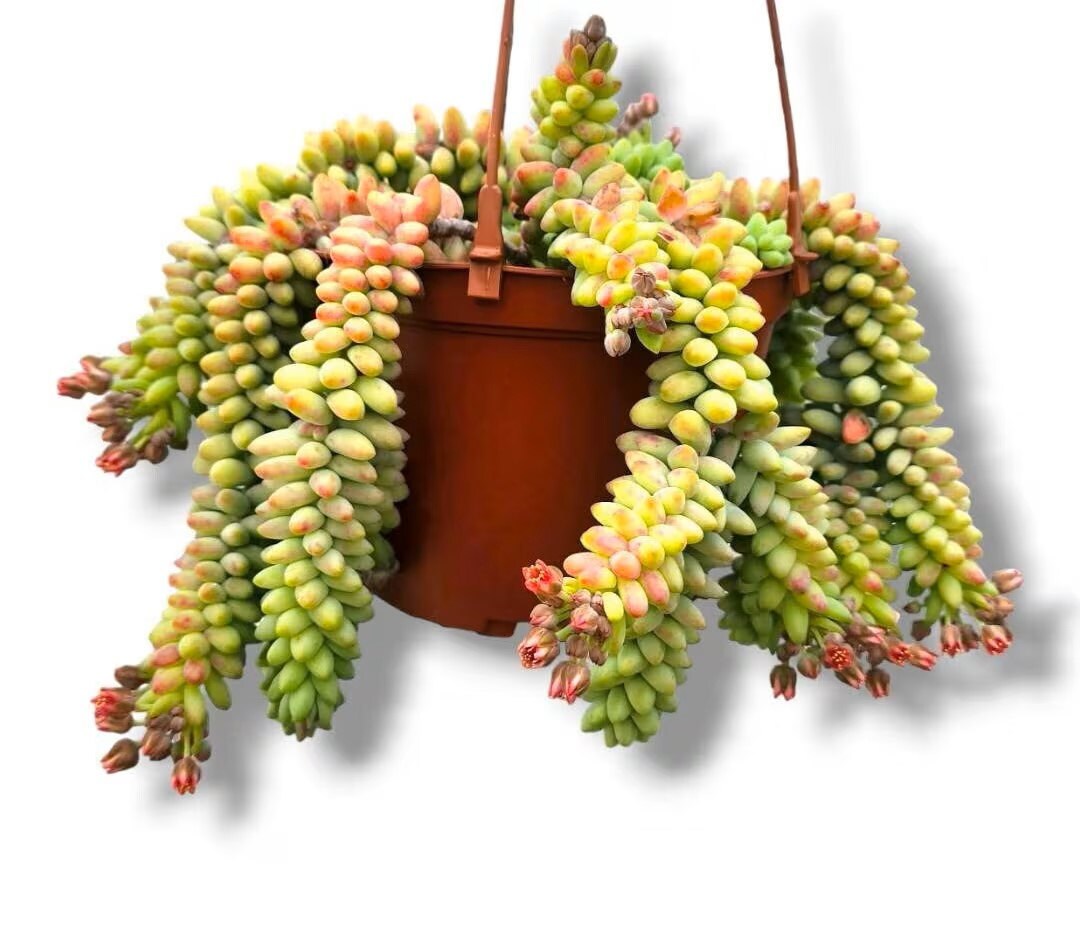The Donkey's Tail succulent, scientifically known as Sedum morganianum, is a mesmerizing and unique plant that has captured the hearts of plant enthusiasts around the world. Here are some more fascinating details about this charming succulent:
1. Origin and Habitat: The Donkey's Tail succulent is native to Mexico and can be found growing in the wild in certain regions of the country. It thrives in rocky, well-draining soils and is often seen growing on cliff edges or rocky outcrops. In its natural habitat, it is exposed to bright sunlight and warm temperatures.
2. Appearance: The Donkey's Tail is best known for its trailing growth habit, which gives it the appearance of a living necklace or a cascading waterfall of green leaves. The succulent features thick, fleshy, cylindrical leaves that grow densely along its long, trailing stems. The leaves are bluish-green in color and can measure up to 3-4 inches in length. As the plant matures, it develops a characteristic reddish tinge at the tips of its leaves.
3. Common Names: Apart from its scientific name, Sedum morganianum, the Donkey's Tail succulent is known by several common names. Some of the most popular ones include Burro's Tail, Horse's Tail, Lamb's Tail, and Monkey's Tail. These names allude to the plant's trailing appearance, resembling the tails of various animals.
4. Propagation: As we discussed earlier, the Donkey's Tail can be propagated through various methods, including stem cuttings, leaf cuttings, division, offsets, and seeds. Each method has its advantages and can be a rewarding way to expand your collection or share the joy of growing these succulents with others.
5. Care and Maintenance: One of the reasons the Donkey's Tail succulent has gained popularity is its low maintenance requirements. It is relatively easy to care for, making it a suitable choice for both novice and experienced plant enthusiasts. Key care tips include providing bright, indirect sunlight, using well-draining succulent soil, and avoiding overwatering. The plant is sensitive to excessive moisture and can suffer from root rot if not given proper drainage.
6. Indoor vs. Outdoor Growth: The Donkey's Tail is predominantly grown as a houseplant in many regions due to its sensitivity to frost and cold temperatures. When cultivated indoors, it thrives in pots and hanging baskets, where its trailing stems can drape gracefully over the edges. Outdoors, it can be grown in rock gardens, hanging planters, or containers on patios, provided the climate is warm and frost-free.
7. Plant Size: The Donkey's Tail succulent can reach impressive lengths when allowed to grow freely. In ideal conditions, its stems can grow up to 2 to 3 feet (60 to 90 cm) long. However, it is relatively slow-growing, so it may take some time to reach its full potential.
8. Popular Companions: The Donkey's Tail is often paired with other succulents or cacti in arrangements or gardens. Its trailing habit makes it an excellent companion for taller, upright succulents or plants, creating a visually appealing contrast.
The Donkey's Tail succulent is a delightful and visually stunning plant that adds a touch of natural elegance to any space. With its low maintenance needs and various propagation methods, it's no wonder this captivating succulent has found a special place in the hearts of plant lovers worldwide. Whether grown indoors or outdoors, the Donkey's Tail continues to enchant and inspire those who cultivate it.

